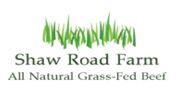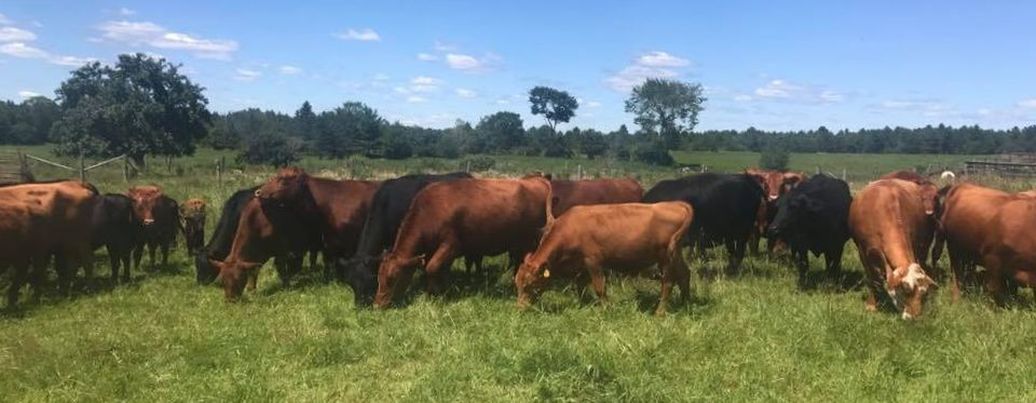OUR ORGANIC PRACTICES
Managed INTENSIVE Rotational Grazing / Mob Grazing

In agriculture, Managed Intensive Rotational Grazing, also known as mob grazing is a variety of closely related systems of forage use in which herds are regularly and systematically moved to fresh rested areas with the intent to maximize the quality and quantity of forage growth.
One primary goal of mob grazing is to have a vegetative cover over all grazed areas at all time, and to prevent the complete removal of all vegetation from the grazed areas ("bare dirt"). Mob grazing an be used with cattle, sheep, goats, pigs, chickens, turkeys, ducks and other animals. The herds graze one portion of pasture, or a paddock, while allowing the others to recover. The length of time a paddock is grazed will depend on the size of the herd and the size of the paddock and local environmental factors. Resting grazed lands allows the vegetation to renew energy reserves, rebuild shoot systems, and deepen root systems, with the result being long-term maximum biomass production. Mob grazing is especially effective because animals grow better on the more tender younger plant stems. Mob grazing also leave parasites behind to die off minimizing or eliminating the need for de-wormers. Pasture systems alone can allow grazers to meet their energy requirements, and with the increased productivity of this kind of systems, the grazers obtain their nutritional needs without the supplemental feed sources that are required in continuous grazing systems.
One key element of this style of animal care is that either each grazed area must contain all elements needed for the animals (water source, for instance) and the water source must be moved each time the animals are moved. Having fixed feeding or watering stations defeats the rotational aspect, leading to degradation of the ground around the water supply. Special care must be taken to ensure that high use areas do not become areas where mud, parasites or diseases are spread.
Intensive rotational grazing reduces stress on the animals because they do not have to continually search for high quality forage. If rotated effectively the animals are moved to new, fresh, energy abundant, grass every 12 to 24 hours.
One primary goal of mob grazing is to have a vegetative cover over all grazed areas at all time, and to prevent the complete removal of all vegetation from the grazed areas ("bare dirt"). Mob grazing an be used with cattle, sheep, goats, pigs, chickens, turkeys, ducks and other animals. The herds graze one portion of pasture, or a paddock, while allowing the others to recover. The length of time a paddock is grazed will depend on the size of the herd and the size of the paddock and local environmental factors. Resting grazed lands allows the vegetation to renew energy reserves, rebuild shoot systems, and deepen root systems, with the result being long-term maximum biomass production. Mob grazing is especially effective because animals grow better on the more tender younger plant stems. Mob grazing also leave parasites behind to die off minimizing or eliminating the need for de-wormers. Pasture systems alone can allow grazers to meet their energy requirements, and with the increased productivity of this kind of systems, the grazers obtain their nutritional needs without the supplemental feed sources that are required in continuous grazing systems.
One key element of this style of animal care is that either each grazed area must contain all elements needed for the animals (water source, for instance) and the water source must be moved each time the animals are moved. Having fixed feeding or watering stations defeats the rotational aspect, leading to degradation of the ground around the water supply. Special care must be taken to ensure that high use areas do not become areas where mud, parasites or diseases are spread.
Intensive rotational grazing reduces stress on the animals because they do not have to continually search for high quality forage. If rotated effectively the animals are moved to new, fresh, energy abundant, grass every 12 to 24 hours.



